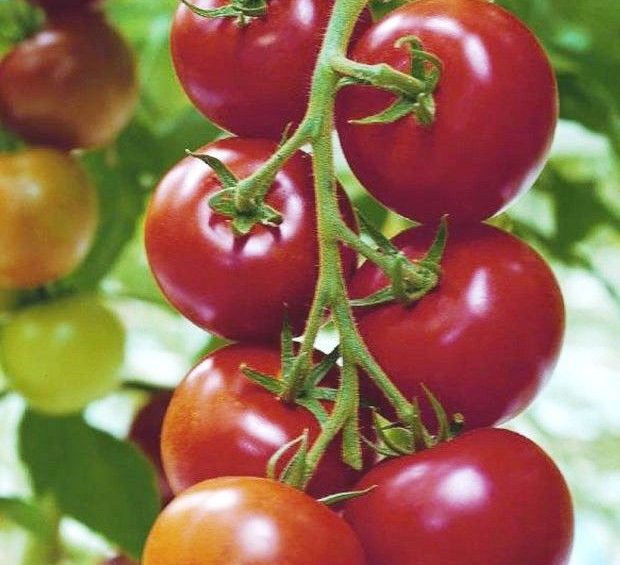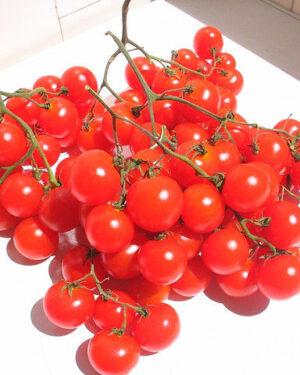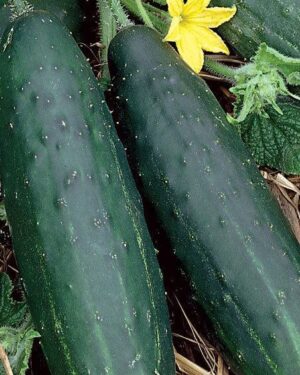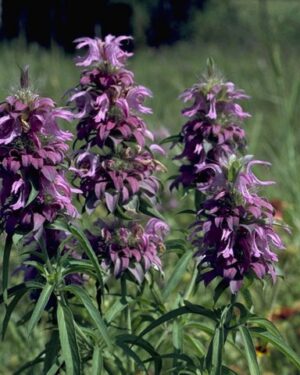Description
Tomato Shirley F1
Tomato Shirley F1. One of the most reliable and popular F1 varieties, perfect for the UK climate in cold or slightly heated glasshouses. The plants are uniform and vigorous reaching up to 2m, whilst delivering heavy crops of excellent quality fruit. Good resistance to Tobacco Mosaic Virus, Cladosporium ABC and Fusarium. Indeterminate.
Cultivation Advice
- Choose well-draining, fertile soil with a slightly acidic to neutral pH (6.0-7.0).
- Enhance the soil with organic matter like compost to promote nutrient availability.
- Start Shirley F1 tomato seeds indoors 6-8 weeks before the last expected frost.
- Transplant seedlings into the garden after the danger of frost has passed, maintaining proper spacing (18-24 inches apart).
- Provide full sunlight exposure, ensuring at least 6-8 hours of direct sunlight daily for optimal growth and fruiting.
- Maintain consistent soil moisture throughout the growing season. Water deeply and regularly, especially during dry spells.
- Apply a layer of organic mulch around the base of the plants to conserve soil moisture, suppress weeds, and regulate soil temperature.
- Shirley F1 tomatoes are indeterminate, so providing support like stakes or cages is essential to prevent sprawling and ensure proper fruit development.
- Use a balanced, all-purpose fertilizer at planting and regularly throughout the growing season. Adjust based on plant needs and soil conditions.
- Prune indeterminate varieties by removing suckers and lower foliage to improve air circulation and sunlight penetration.
- Regularly inspect for common tomato pests such as aphids, whiteflies, or hornworms.
- Employ natural pest control methods or introduce beneficial insects to manage pest populations.
- Water at the base of the plant to minimize the risk of fungal diseases. Mulching can also help prevent soil-borne diseases.
- Harvest Shirley F1 tomatoes when they reach their mature color and have a firm texture. These tomatoes are known for their excellent flavor and disease resistance.
- Plant tomatoes with companion plants like basil, marigolds, or nasturtiums to deter pests and enhance growth.
- If space is limited, Shirley F1 tomatoes can be grown in containers with good drainage.
- Understand that Shirley F1 is an indeterminate variety, meaning it continues to grow and produce fruit throughout the season.
- Wait until the soil has warmed before transplanting seedlings to ensure optimal growth.
- Shirley F1 tomatoes prefer warm temperatures. Plant them after the soil has thoroughly warmed up, and protect young plants from late spring frosts.
- Water the plants at the base to prevent water from splashing onto the foliage, reducing the risk of fungal diseases.
- Use a drip irrigation system or soaker hoses for efficient and targeted watering.
- Regularly inspect the foliage for any signs of diseases or pests. Early detection allows for timely intervention.
- Given the indeterminate nature of Shirley F1, provide adequate support for branches laden with tomatoes to prevent breakage.
- Harvest tomatoes when they reach their mature color and have a slightly soft feel. Shirley F1 tomatoes are known for their uniform size and vibrant red color.
- Practice crop rotation to reduce the risk of soil-borne diseases. Avoid planting tomatoes in the same location every year.
- Install sturdy tomato cages around the plants early in the growing season to provide support as they mature.
- Implement organic pest control methods, such as introducing beneficial insects or using neem oil, to deter common tomato pests.
- In cooler climates, consider using season extension techniques like row covers to protect plants from late spring or early fall frost.
- Check if there are disease-resistant varieties of Shirley F1 available. Opting for resistant varieties can contribute to overall plant health.
- In late summer, consider light pruning to improve air circulation and sunlight penetration, especially if the plant has dense foliage.
- Utilize a moisture meter to monitor soil moisture levels and adjust watering practices accordingly to prevent overwatering or underwatering.
- Experiment with natural mulching alternatives like straw or shredded leaves to maintain soil moisture and regulate temperature.
- Periodically amend the soil with organic matter to replenish nutrients and improve soil structure.
- Keep a garden journal to record observations, including plant growth, flowering patterns, and any challenges faced, for future reference and improvement.









Reviews
There are no reviews yet.